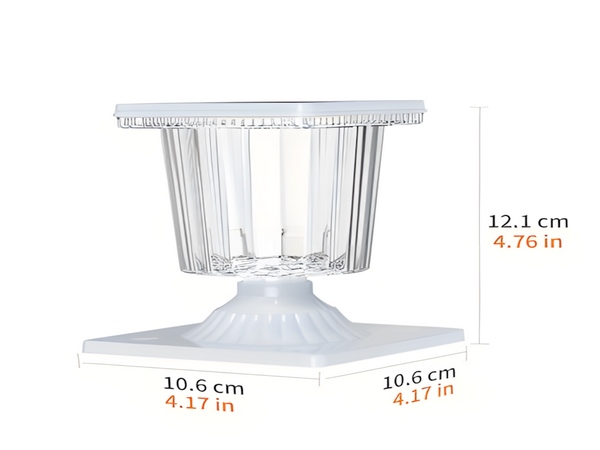
Solar street lights have become the main facility for illuminating roads in both urban and rural areas. They are easy to install and do not require extensive wiring. During the day, they collect solar energy through solar panels, converting it into electricity stored in batteries. At night, this electricity is converted back into light, providing illumination for pedestrians. In this process, lithium batteries play a crucial role. Compared to traditional lead-acid batteries, lithium batteries have significantly improved performance in efficiency and safety. However, there are various types of lithium batteries, such as liquid and polymer lithium batteries; despite both being lithium batteries, they have considerable differences. Below, we will specifically compare them.
1. Different Shapes
Due to the differences in electrolytes, there are substantial variations in their shapes. The polymer lithium battery can have a solid-state or gel-state electrolyte, greatly enhancing design flexibility for the battery’s appearance. It can be made very thin, theoretically with a thickness below 0.05 mm. Additionally, it can be produced in any area and shape, better accommodating product requirements and allowing the creation of batteries in any form and capacity, which provides solar street light developers with high design flexibility and adaptability, maximizing product performance.
On the other hand, liquid lithium batteries utilize electrolyte solutions, necessitating a robust outer shell for additional packaging to contain the electrolyte, which limits their dimensions and shapes, and adds some weight to the lithium battery.
2. Different Raw Materials
The construction of batteries primarily involves three elements: the positive electrode, the negative electrode, and the electrolyte. Polymer lithium batteries use at least one or more components made from polymer materials, which are characterized by having a high molecular weight and resulting in items with high strength, toughness, and elasticity. Currently, in most polymer lithium-ion batteries, polymer materials are generally applied to the positive electrode or the electrolyte. The positive electrode generally uses inorganic compounds typically found in lithium-ion batteries or conductive polymer materials, while the negative electrode usually employs lithium metal or lithium-carbon intercalation compounds.
The electrolyte is made from solid or gel-state polymer electrolytes. This type of electrolyte resembles plastic film, not able to conduct electrons but allows the exchange of ions (charged atoms or atom clusters), replacing the traditional porous membrane soaked in liquid electrolyte.
In contrast, liquid lithium batteries primarily differ in that their electrolytes are made from liquid or colloidal electrolytes.
3. Different Safety Performance
In terms of safety, polymer lithium batteries display significant advantages, as they are mostly soft-pack batteries with outer shells typically made from aluminum-plastic films. This material has good ductility, flexibility, and mechanical strength, showing excellent barrier properties and thermal sealing performance.

Additionally, the electrolyte inside is in solid or gel form, with no excess electrolyte liquid, making it more stable and less prone to dangerous situations caused by overcharging, puncturing, collisions, or overuse. However, this does not mean absolute safety, as under extremely harsh conditions, such as sudden high currents leading to short circuits, hazards are possible.
Compared to liquid lithium batteries, polymer lithium batteries are safer. Liquid lithium batteries are prone to leakage, and due to their sturdy outer shell, they have poor heat dissipation, greatly increasing the risk of explosion.

The above discussion outlines the differences between polymer lithium batteries and liquid lithium batteries used in solar street lights. In general, polymer lithium batteries are a type of lithium-ion battery that offers several significant advantages over liquid lithium batteries, such as higher energy density, miniaturization, ultra-thinness, lightweight design, and enhanced safety, making them a new type of battery.



